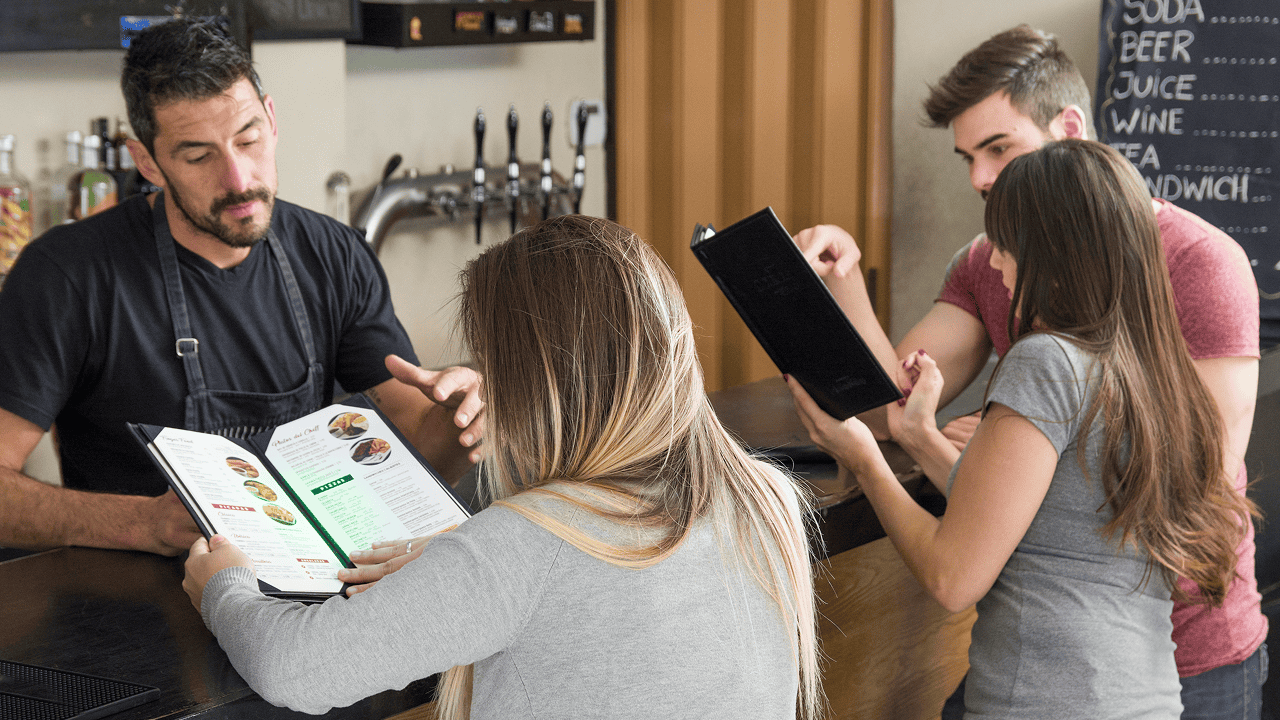
By Amelia Wall October 10, 2025
The restaurant and quick service restaurant (QSR) industry thrives on speed, efficiency, and customer satisfaction. Whether it is a bustling casual dining spot, a food truck, or a busy QSR chain, service must be seamless to keep customers happy and operations smooth. In this environment, payment systems and service models play a much bigger role than many realize. Tipping, open tabs, and reliable offline capabilities are no longer just conveniences—they have become essential tools for managing high-volume service without disruptions. Restaurants that neglect these features risk slower operations, frustrated customers, and lost revenue.
In today’s competitive landscape, diners expect flexibility in how they pay and interact with restaurants. The ability to leave a tip quickly, keep a running tab, or make a payment even when internet service drops has become a basic expectation. Payment technology has evolved to keep up with these needs, offering robust solutions tailored for the realities of the food service industry.
Why Tipping Options Matter in Restaurants and QSRs
Tipping is a cornerstone of the restaurant experience, providing servers, bartenders, and delivery staff with much of their income. Customers also view tipping as a way to recognize good service. For restaurants and QSRs, ensuring that tipping options are simple and accessible is crucial. Modern point-of-sale (POS) systems now allow digital tipping prompts, which encourage customers to leave gratuities without feeling pressured. This has been especially important as more customers choose to pay with cards, mobile wallets, or contactless methods instead of cash.
The design of tipping prompts can directly influence outcomes. Studies show that when customers are presented with suggested percentages, they are more likely to tip at higher levels than they would if left to calculate manually. For restaurants, this translates into happier staff and higher retention rates, since employees feel valued. In QSRs, where tipping is less traditional, digital prompts at kiosks or on handheld devices make it easy for customers to contribute without disrupting the fast pace of service. Offering multiple tipping options ensures fairness for staff and convenience for diners, aligning with modern expectations in hospitality.
The Value of Open Tabs in Busy Environments

Open tabs have long been a staple of bars and casual restaurants, but their importance has grown in today’s service landscape. For customers, tabs mean they can order multiple items without repeatedly pulling out a card or phone. For staff, tabs streamline workflow, reducing the time spent processing individual transactions. In a busy restaurant or QSR environment, this small adjustment can significantly speed up service and reduce bottlenecks during peak hours.
Modern POS systems have improved how tabs are handled, making them more secure and easier to manage. Staff can attach tabs to specific tables or customer profiles, reducing errors and ensuring accuracy at checkout. Digital receipts and automated calculations at the end of a visit also reduce disputes. For customers, the convenience of keeping a tab open fosters a more relaxed and enjoyable experience. For businesses, it translates to higher spending, as customers are more likely to order additional items without the friction of repeated transactions. Tabs, once considered a bar-specific feature, are now a must-have across all types of restaurants and fast-paced food establishments.
Why Offline Mode Protects Revenue and Service
Few things disrupt a busy restaurant more than a payment system going down during peak hours. Internet outages or connectivity issues can quickly create chaos at the checkout counter, leading to frustrated customers and lost revenue. This is why offline mode is essential for restaurants and QSRs. Offline capabilities allow transactions to continue even when internet service is temporarily unavailable, storing card data securely and processing payments once connectivity is restored.
Offline mode is not just about preventing losses—it is about maintaining trust. Customers expect smooth service, regardless of technical issues behind the scenes. By ensuring payments can still be processed, restaurants avoid long lines, abandoned orders, and negative customer impressions. For staff, it reduces stress and allows them to stay focused on serving rather than troubleshooting. In the fast-moving world of QSRs, even a few minutes of downtime can cost hundreds of dollars. Offline mode is, therefore, a critical safeguard that ensures continuity and protects both customer experience and business profitability.
Balancing Speed with Accuracy in QSR Payments
Quick service restaurants are built on speed, but accuracy cannot be sacrificed. Payment systems that prioritize both are crucial for success. Features like tipping prompts, open tabs, and offline functionality must be integrated in ways that do not slow down transactions. For example, digital kiosks at QSRs are designed to capture orders and payments within seconds, reducing wait times. However, these systems must also ensure accurate calculations for add-ons, discounts, and loyalty rewards.
Errors in payments not only frustrate customers but also increase labor costs, as staff must spend time resolving disputes. This balance between speed and accuracy is why many QSRs are turning to advanced POS systems that sync data across all touchpoints. These systems ensure customers enjoy quick, smooth experiences while restaurants benefit from reliable back-end reporting. In the competitive QSR landscape, efficiency is not enough—systems must be smart enough to support high transaction volumes without compromising quality.
Customer Experience as the Core of Service Technology
At the heart of tipping, tabs, and offline capabilities lies the customer experience. Diners do not see the technical complexity behind these features; they simply want transactions to be quick, reliable, and convenient. Restaurants that make payments effortless create positive impressions that encourage repeat visits. In QSRs, where customer turnover is high and loyalty is harder to secure, smooth payment experiences can make a significant difference.
Customer testimonials often highlight how seamless payment processes influence their overall perception of a restaurant. A simple tip prompt or the ability to keep a tab open may seem minor, but these features create a sense of ease and professionalism. Offline mode further reinforces confidence, ensuring customers never experience the embarrassment of declined payments due to system errors. When technology supports a frictionless experience, customers feel valued, and this drives both loyalty and long-term success.
Staff Satisfaction and Operational Efficiency
While customer experience is critical, staff satisfaction is equally important. Servers, cashiers, and managers benefit directly from POS features that simplify payments. Tipping prompts lead to higher gratuities, boosting morale and reducing turnover. Open tabs reduce repetitive tasks, allowing staff to focus more on service than on processing payments. Offline mode prevents the panic that can set in when systems go down, reducing stress during busy shifts.
Operational efficiency also improves when staff can rely on consistent systems. Training becomes easier when POS features are intuitive, and managers benefit from accurate reporting and reduced reconciliation errors. For QSR chains, standardizing these tools across locations ensures consistency in service and simplifies operations. By investing in these must-have features, restaurants not only improve customer experiences but also create better working conditions for staff, which in turn enhances overall performance.
The Role of Mobile and Contactless Payments
The rise of mobile wallets and contactless payments has reshaped customer expectations across all industries, including restaurants and QSRs. Customers now expect to pay with phones, smartwatches, or contactless cards, often without even taking their wallet out. Integrating these options alongside tipping, tabs, and offline functionality ensures restaurants remain competitive in a world where convenience rules.
Mobile payments also align with hygiene-conscious habits, which became especially important during the pandemic. For QSRs, speed is another advantage: tap-and-go payments reduce transaction times compared to chip cards or cash. Combining mobile payment options with tipping prompts ensures staff still benefit, while integration with tabs allows for smoother service. Offline compatibility ensures that these payments remain reliable even during outages. Together, these features define the modern dining experience, making mobile and contactless payments essential for forward-thinking restaurants.
Adapting Features for Different Restaurant Models
Not all restaurants operate the same way, and the must-have features of tipping, tabs, and offline mode must be adapted accordingly. For fine dining establishments, tipping remains central, and open tabs are almost always expected. For QSRs, tipping may play a smaller role, but digital prompts help capture additional revenue. Tabs are less common in QSRs but can be useful for drive-thru customers or large group orders.
Offline mode is universally important, regardless of the type of restaurant. Whether managing a high-end restaurant or a fast-moving QSR chain, downtime is unacceptable. Platforms designed for restaurants must be flexible enough to adapt these features to the specific service model. Customization ensures that each restaurant type maximizes efficiency without complicating operations. By tailoring these features, businesses meet customer expectations while supporting staff in ways that suit their unique environments.
The Future of Payment Technology in Restaurants
Looking ahead, payment systems in restaurants and QSRs will continue to evolve. Artificial intelligence, data-driven insights, and even biometric authentication may soon become part of everyday transactions. However, the fundamentals of tipping, open tabs, and offline reliability will remain crucial. These features form the backbone of a smooth service experience, and as technology advances, they will only become more sophisticated.
The future may see POS systems that automatically suggest tip amounts based on customer behavior, predictive analytics for managing open tabs, or enhanced offline functionality that ensures zero disruptions. Restaurants and QSRs that stay ahead of these trends will benefit from increased efficiency, higher customer satisfaction, and stronger staff retention. The industry is moving quickly, but the focus remains clear: payments should support, not hinder, the dining experience.
The Psychology of Tipping in Modern Dining
Tipping is not just a financial act but also a social signal. Customers often view it as a reflection of gratitude, while staff see it as recognition for their efforts. In restaurants and QSRs, the way tipping options are presented can significantly affect outcomes. Digital systems that suggest percentages, round-up options, or even preset dollar amounts influence how much people leave behind. When tipping feels easy and transparent, customers are more likely to respond positively.
For staff, fair tipping boosts morale and reduces turnover, both of which are major challenges in the food service industry. QSRs have traditionally been less reliant on tips, but with the rise of digital prompts, more customers are choosing to reward counter staff or delivery drivers. By incorporating smart tipping features into POS systems, restaurants build stronger bonds between staff and customers. This creates a cycle where employees feel appreciated and deliver better service, which in turn motivates higher tips.
Managing Group Orders and Split Payments

Large group dining presents unique challenges, from coordinating multiple dishes to managing payment preferences. Customers often prefer to split bills by item or evenly across a table, and modern POS systems now make this simple. Tabs play an important role here, allowing groups to order throughout the evening while keeping everything organized. At the end of the meal, bills can be split seamlessly, avoiding the confusion that once plagued group dining experiences.
In QSRs, group orders are common for office lunches or family takeout. Here, the ability to split payments digitally ensures convenience without slowing down lines. Offline mode further supports these scenarios, as transactions can still be completed even if internet connections falter. For restaurants, these features not only enhance customer satisfaction but also increase efficiency during peak times. Streamlined group payments are a clear example of how thoughtful technology directly improves real-world dining experiences.
Training Staff to Use Advanced POS Features
Even the best tipping, tab, and offline systems can fail if staff are not properly trained. Restaurants must ensure that employees understand how to open and close tabs, guide customers through tipping prompts, and handle offline transactions confidently. Effective training reduces errors, increases efficiency, and builds staff confidence. In turn, this leads to smoother customer interactions, fewer disputes, and a stronger sense of professionalism across the team.
For QSRs, training is particularly important because of high staff turnover. Systems must be intuitive enough for new hires to learn quickly, minimizing disruption. Managers should also focus on explaining how these features directly benefit staff, such as increasing tips or reducing stressful situations when internet connections drop. By fostering a culture of tech competence, restaurants not only improve day-to-day operations but also give staff a sense of empowerment, knowing they can handle the demands of a fast-paced service environment.
Building Customer Loyalty Through Seamless Payments
At the end of the day, tipping, tabs, and offline reliability all feed into one larger goal: customer loyalty. Diners return to places where they feel valued and where service feels effortless. Payment is often the last step in the dining journey, and a smooth, stress-free process leaves a lasting impression. When customers can easily leave tips, keep tabs open, or complete payments without disruption, they associate the restaurant with professionalism and reliability.
In the competitive QSR space, loyalty can be hard to win. Features like mobile integration, contactless payments, and smooth offline operations make a real difference. When combined with loyalty programs, these tools create a strong incentive for repeat visits. Customers appreciate the efficiency and flexibility, while staff enjoy the benefits of consistent tipping and less operational stress. In this way, payment technology becomes more than just a backend process—it becomes a central factor in building trust, reputation, and long-term customer relationships.
Conclusion
In the fast-paced world of restaurants and QSRs, service is measured in seconds, and every detail matters. Tipping options, open tabs, and offline functionality may seem small, but they are essential for keeping operations smooth, staff satisfied, and customers happy. These must-have features support both customer convenience and operational resilience, ensuring that restaurants can thrive even during the busiest hours or unexpected disruptions.
By adopting modern POS systems that integrate these capabilities, restaurants and QSRs secure their place in an increasingly competitive market. Customers will remember the ease of paying, staff will feel supported, and businesses will benefit from stronger performance and loyalty. The industry may evolve with new technologies, but the essentials of tipping, tabs, and offline reliability will always remain at the heart of successful service.